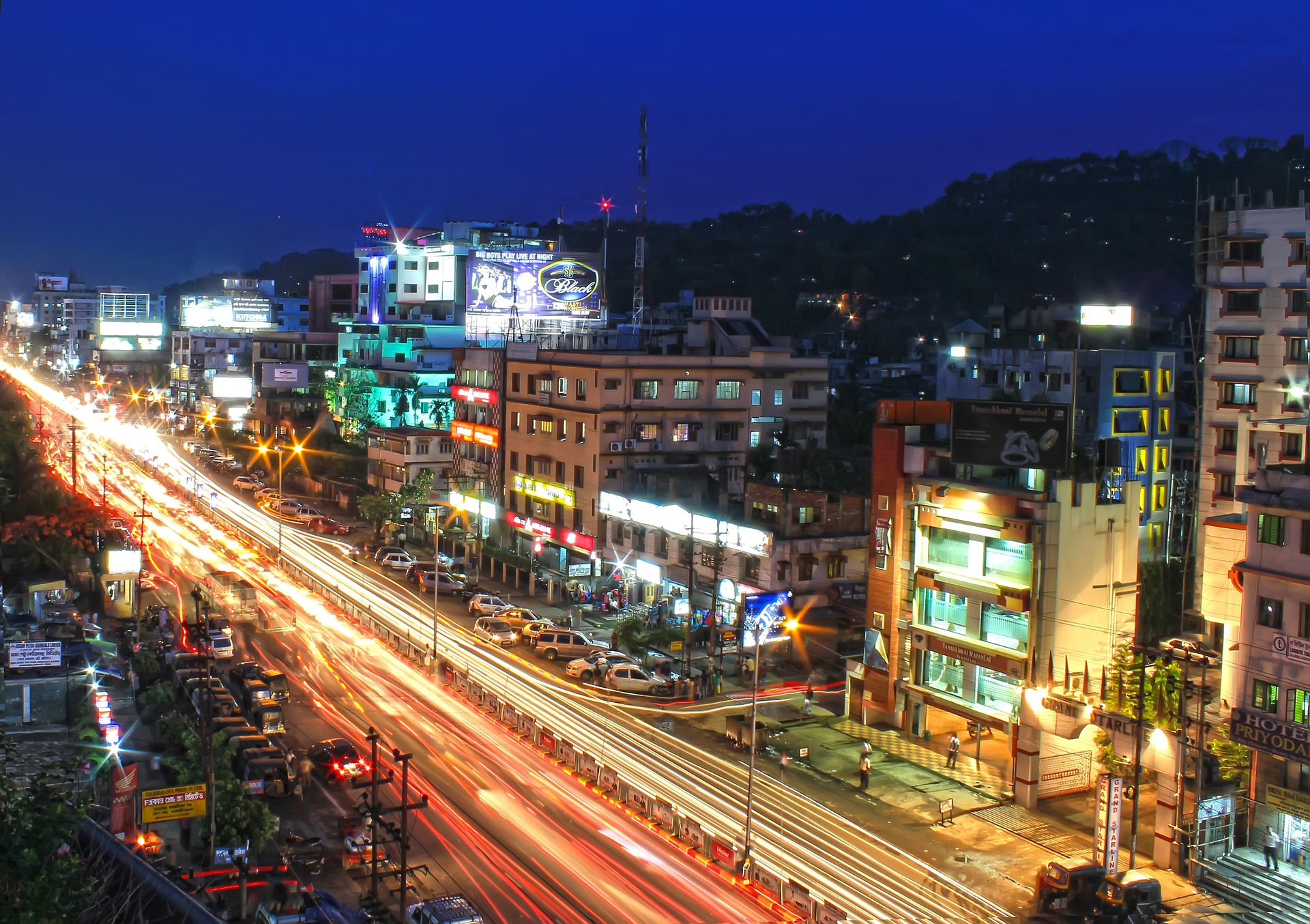Guwahati city is known as the gateway to northeast India and has some of the best tourist attractions in the country.Guwahati is a city in the northeast of India with a population of over two million.
Guwahati is the capital of the state of Assam in India. It is also the largest city in Northeast India and one of three metropolitan areas in the country.
Guwahati, which means “place of cows” or “home on the river bank”, is a hilly city and has been an important trade center for centuries. The city has a rich cultural heritage that encompasses its traditional music, dance, art, and crafts.
Some of the most visited places in Guwahati are:
Assam State Museum, Guwahati:
The Kalakshetra or the Assam State Museum near Dighalipukhuri in Guwahati is perfect for those who wish to get an insight into the city’s golden past! Also known as largest multipurpose museum in the country, the museum is divided into sections which are well defined. Noteably, the museum was established way back in the year 1940 with the collective effort of the Kamarupa Anusandhan Samiti (Assam Research Society). So, do not miss out on visiting it!
The Assam State Museum is located in the heart of Guwahati city, Assam. It showcases Assamese culture and heritage through its collection of antiques, sculptures, paintings, coins, jewellery and other exhibits.
The exhibits of the Museum are displayed under different sections, viz., Epigraphy, Sculptures, Miscellaneous, Natural History, art and Crafts, Anthropology & Folk Art & Arms section. The sculptures from the Assam region fall into four principal categories – stone, wood, metal and terracotta. The collections which are on display here, are very rare.
The library in Assam State Museum was established in 1985 and is rich in its stenographic collections. There are various periodicals, journals and books relating to art, culture, mythology, biography, encyclopedic works and even the Asiatic Society journals of the country.
The museum remains open 06 days from 10:00am – 5:00pm during summers and from 10:00am – 4:30pm during winters except on Mondays; 2nd and 4th Saturday and Government Holidays.Currently due to COVID-19 pandemic the museum is temporarily closed for public.
Kamakhya Temple, Guwahati:
Kamakhya temple is one of the oldest and most famous temples in India. It is located in the town of Guwahati, Assam. The temple is dedicated to Goddess Kamakhya, also known as “the Great Mother”.
- The temple was built by King Narakasura in the 7th century AD.
- The original temple was destroyed by a natural disaster and it was rebuilt in 1228 AD.
- Kamakhya Temple is one of the 51 Shakti Pithas, which are holy sites related to Shakti or Goddess Durga.
Transition: Moreover, Guwahati is an ancient city, and it is mentioned as Pragjyotishpur in many ancient literature and manuscripts. This capital city of the state of Assam is dotted with a number of ancient temples. The most famous among these is the Kamakhya Temple.
The Nilachala is comprised of three parts (i.e. the Brahma Hill, Vishnu Hill and Shiva Hill). This temple town is approximately 600 feet above the plains. The Bhubaneswari Temple is located at the highest point from where one is able to enjoy the panoramic view of the Guwahati City. The mighty Brahmaputra mentioned as Louhitya in epics and Puranas is flowing on the northern side of the Hill.
The Nilachala Hill houses some other temples such as the Banadurga temple, the Jaya Durga temple, the Lalita Kanta temple, the Smasanakali temple, the Gadadhar temple, the Ghantakarna temple, the Trinath temple, the Sankheswari temple, the temples of Dwarpala Ganesha, the Hanuman temple, the Pandunath temple (located in Baraha Hill) etc
Also Read: 5 Mistakes To Avoid When Traveling With Your Pets
Ahom Kingdom Monuments:
The first Ahom king, Chaolung Sukaphaa, laid the foundations of the Ahom Kingdom when he arrived from Mong Mao, a kingdom located on the easternmost reach of the Indian subcontinent.
He entered the Brahmaputra valley by crossing the Patkai mountain range. Along with him came his three queens, two sons and a retinue of nobles and officials and soldiers. He reached modern-day Namrup on 2 December 1228 and settled in the area on the south bank of the Burhidihing river, the Dikhau river in the south and Patkai mountains in the east.
Making his capital at Charaideo, he befriended the local tribes consisting of the Barahi and the Marans peoples. The technology Sukaphaa and his people had bought with them was shared with the local people of the region. This technology was the wet rice cultivation with an increased agricultural output of the region. Gradually, the Ahom way of life and polity absorbed other people of the region such as the Barahi, increasing the Ahom numbers significantly.
For his position Assamese history, the honorific Chaolung is associated with him. Sukaphaa would pass away in 1268 having laid the groundwork of a strong sovereign kingdom.
The process of assimilation continued until the 16th century when the Ahom kingdom expanded enough to bring other ethnicities into its fold, thus making the kingdom multi-ethnic and inclusive in its outlook. Despite facing regular attacks from the Turkic and Afghan rulers of Bengal, the Ahom Kingdom successfully resisted these advances and even expanded westwards to include territory around the Karatoya river.
Guwahati zoo:
The Guwahati Zoo, established in 1957, is the only zoo in the city. Spanning a total area of 1.75 sq.km, it houses approximately 84 species of animals. The park is open every day from 10 am to 5 pm, except on Mondays.
There are two entrances to the zoo- one through the front gate and one through a back gate. There are also three different zones inside: an Indian animal zone, an African animal zone, and a bird park.
Apart from being the region’s premier zoo and ex-situ conservation centre, services and facilities in rescue and rehabilitation of wild animals, nature awareness, interpretation and responsible nature-tourism. We shall continue to act as a repository of wild bio-diversity and a green lung for the city of Guwahati. We shall also strive to make Assam State Zoo Cum Botanical Garden the best and complete recreational and educational destination in the whole of North-east India.
Umanada Island:

Sightseeing in Guwahati is amazing and huge as the place is brimming with myriad interesting and unexplored places. Located on the banks of the mighty Brahmaputra River, the city offers several interesting sights and sounds. Besides, there are several hills that practically add to the city’s beauty side.
Dedicated to the Hindu Lord Shiva, Umananda Temple on the Peacock Island is another noted attraction in the city. The Brahmaputra River surrounds the temple and prompt and regular ferry services are available from the Kachari Ghat, Guwahati.
Bhasmacala is the little hillock on which this old shrine is located. As per legend, it was here that Lord Shiva burned Kamadeva into ashes because he interrupted his deep meditation. Gadadhar Singh, Assam’s king in the 17th century, rebuilt the shrine later and since then it has become a prime tourist and religious spot here. Just 10 km away from the city is the Basistha Ashram Temple. The shrine was built by Ahom king Rajeswar Singh in the year 1764 and is dedicated to Lord Shiva.
However, the temple gets its name from the Vedic age sage Vasishtha who built his ashram in the same location. There is little but extremely lovely mountain stream flowing by the shrine, which adds to the beauty of the surroundings. A number of pujas and other celebrations take place here on important days and the atmosphere remains quite festive. Basistha Ashram Temple is actually a must-visit in Guwahati, when exploring the city.




